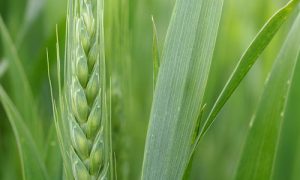There are more than 30,000 different wheat varieties, which can be divided into six different classes: Hard red winter, hard red spring, soft red winter, hard white, soft white and durum. Farmers in Central Oregon primarily grow varieties that are either from the hard red winter or soft white classes. Hard red winter wheat is planted in the fall. When cold weather arrives, it becomes dormant. Growth begins again the following spring and it is harvested in late spring or early summer. In Jefferson County, soft white winter is generally planted in the spring and harvested in late summer or early fall.

At harvest, combines are driven through fields, thrashing the wheat kernels from the stock and depositing them into truck trailers. Wheat can be stored in silos until the grower wishes to sell it. It is then hauled to grain elevators where it is sold primarily for export.

Hard red winter wheat is used for bread, hard baked goods and added to other flours to increase protein content. Some brands of unbleached all-purpose flour are made exclusively from hard red winter. Soft white winter wheat has a larger percentage of carbohydrates so it has less gluten-forming protein. It is used as cake and pastry flour.

Trivia
- The Roman goddess Ceres, who was deemed protector of the grain, gave grains their common name of “cereal.”
- The first commercial flour mill in Eastern Oregon was built in John Day in 1865 to help feed the 6,000 gold miners in the area.
- Wheat first appeared in the U.S. in 1777 as a hobby crop.
- In the U.S., one acre of wheat yields an average of 40 bushels.
- Archeologists can date wild strains of wheat as far back as 9600 BC.
- Wheat is grown in 42 of the 50 states.
Jefferson County Seed Growers Association | website by chachkagroup

